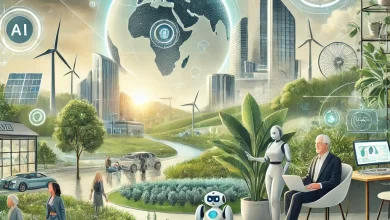Change is an essential part of growth. Whether business or personal, small-scale or expansive, we need change to move forward and maintain any level of success. The problem is that change, while necessary, isn’t always easy, and the most common barrier to change is people. In order to successfully drive change, businesses need everyone involved to be willing, motivated, and responsive, and that’s where the problem lies.
The world around us is changing rapidly, with the COVID-19 pandemic hastening the need for digital transformation. Technology and AI-driven solutions are there to help achieve it. Everything is moving in this digital direction, and to keep up with customer demand, organisations need to move in that direction too. But with research telling us that only 30% of digital transformation initiatives succeed, it’s apparent that there’s a disconnect between the need for change and that change actually happening.
So how can a business overcome the hurdle of its people being resistant to change? The answer is in understanding behaviours. Doing so makes it much easier to implement new ideas and processes at the executive level, which in turn helps facilitate business transformation and growth. But why focus on the executive level?
Implementing change from the top-down.
When the executive level drives change, it helps reduce risk, streamline the process, and minimise confusion by demonstrating clear lines of authority. This approach is often criticised for being too autocratic, and the most successful changes are driven top-down and bottom-up. But for the people on the ground to be involved in the decision-making and implementation of change, they need to have been briefed and motivated from higher in the company. This means that the executive level must be on board and motivated to ‘sell’ the change.
This is where we often see roadblocks when looking at change at the executive level. Execs need to have the mindset and capabilities for the challenges brought about by growth, but they also need to be able to give the people they’re leading the tools and capabilities to facilitate change. If they’re not completely comfortable with change themselves, perhaps holding on to prior beliefs, how can they lead and motivate their teams?
How behavioural science can help to implement change at the executive level
Modifying people’s thought processes and beliefs is tough, particularly when it comes to change. It’s so easy to stick with what they know and are comfortable with, why would they want to embrace the unknown?
In order to have any success in changing mindsets to embrace change we need a greater understanding of those mindsets. This includes understanding why people make decisions in the way they do, understanding what they need in any given situation, what they care about, what makes them think rationally, or with emotion. There are so many behavioural factors involved in influencing change, and behavioural science helps us understand at a much deeper level. Unless you understand what’s behind people’s resistance to change, how can you solve it?
How to leverage behavioural sciences to drive change
Behavioural science uses principles of decision-making and mindset to help us understand what people are likely to be thinking, and what their attitudes are likely to be. By breaking down what people are thinking, and why, we gain a greater understanding of the barriers to change we’re facing. And from there, an understanding of how to tackle those barriers and solve the issue.
Once we understand the factors that are blocking a person’s willingness to accept change, a practical plan of attack is the next step. Using behavioural science to identify and target the underlying causes of change resistance is the most effective way of finding a solution.
People-first, not tech-first
It might seem odd that we’re recommending a people-first approach over a tech-first approach when we’re talking about driving digital transformation, but it’s for a good reason. When you let products drive change within an organisation, the starting point is generally a crisis – or at least when you have no choice but to change.
The result? A change process that’s forced and rushed, and not as effective as it could be. Letting people drive change, proactively looking at potential opportunities for change, can drastically improves the end results. That’s why it’s vital that people, not products, drive changes within a business.
Changing for the future
If the global health pandemic and other recent socio-economic crises teach us anything, it’s that change, and digital transformation in particular, is no longer just a ‘nice-to-have’. It’s an essential building block in the path to dealing with business disruption, building resilience, and pivoting to ensure success.
Behavioural science is an effective way of understanding what motivates executive decisions, giving businesses the valuable first step towards optimising processes and creating more efficiency from the top-down.



